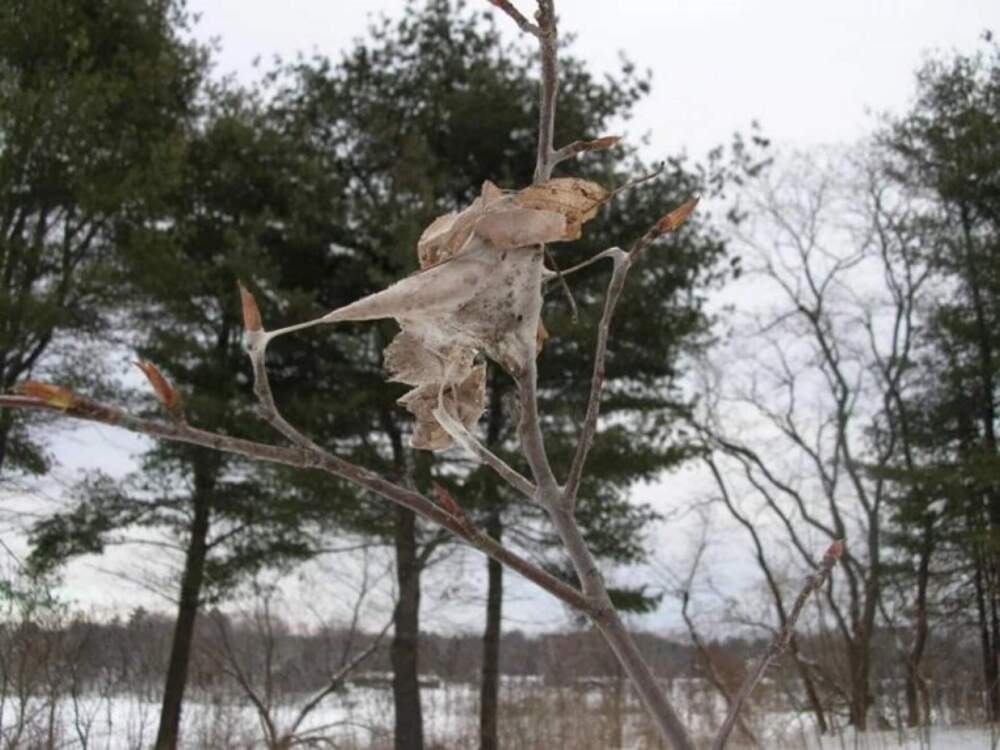Advertisement
Toxic browntail moth caterpillars found in N.H. for first time in 75 years

Browntail moth caterpillars, a toxic invasive insect species, have been identified In New Hampshire for the first time in 75 years, according to the Department of Natural and Cultural Resources.
Experts urge anyone who spots the caterpillars to avoid touching them. They have poisonous hairs that can cause a poison ivy-like skin rash or even breathing problems through airborne contact.
Kyle Lombard, a forest entomologist with the state, said people should keep an eye for the creature’s distinguishing physical traits.
“They're very hairy caterpillars, an inch and a half long with white marks down each side of the caterpillar, with two orange dots on the back of the caterpillar,” he said. “If you have something that's hairy and potentially meets that description, you should not be messing with it.”
In New England, the exposure risk to the toxic hairs is at its greatest from April until July.
The Bureau of Forest Health removed the insect's webs from coastal shrubs on Star Island in the Gulf of Maine.

Oak and apple trees are their primary host.
The browntail moth first arrived in North America with European ships at the end of the 19th century, spreading across New England and the Atlantic coast of Canada. In the 20th century, a massive federal works project nearly eradicated the species, reducing its habitat to around Casco Bay in Maine.
But recently the moth has been moving south, and Lombard said entomologists are not sure why.
“It's likely not related to the climate because this thing is very adapted to cold weather. It overwinters as a larvae, and so a warming winter or even a cooling winter isn't going to bother it,” he said.
Lombard recommended that local residents along the Maine border keep an eye out for the insect and visit nhbugs.org for more information. On the website, people can upload pictures of potential browntail moth caterpillars and experts can help identify them and design a control plan.
This story is a production of the New England News Collaborative. It was originally published by New Hampshire Public Radio.